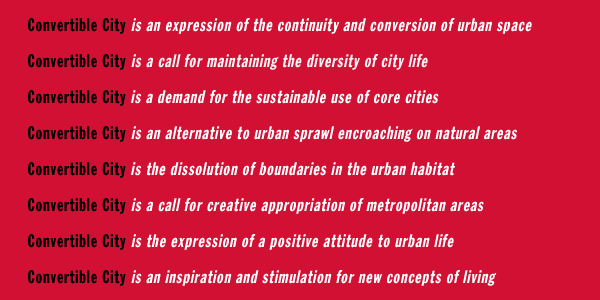„Cities. Architecture and Society“ - The 10th International Architecture Exhibition Venice 2006, directed by Richard Burdett, highlights the changes of urban life at the beginning of the 21st century. At present, more than half of the world’s population lives in cities. Urban life is marked by the varied interaction of economic, social, geographical, political, cultural and creative processes of transformation.
Contrary to the rapidly expanding new metropoles in Asia and Latin America, the form of the European city is still largely determined by tradition and history. The restructuring of industrial society as well as demographic changes and an increasingly pluralistic society present distinct challenges to architecture and urban planning in Germany, particularly with regard to existing urban structures. Meeting these challenges means discovering new opportunities for interaction between past, present and future.
The German contribution examines stimulating conversions in existing urban space situations, that enrich the dynamics and creativity of city life. Exemplary projects illustrate the exiting tensions that densification and transformation exert on architecture and the urban fabric, as well as the sustainable use of the available potential of a “vertically open” periphery for new working and living environments.
With an emphasis on transformation and conversion in the urban context, the exhibition reveals a shift in perception within the sphere of architecture. Focusing on the hitherto rather unattractive tasks of re-building and re-use contributes to their revaluation in terms of design and content not only amongst experts but also in the public consciousness.


